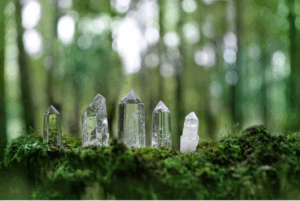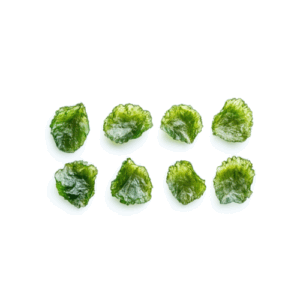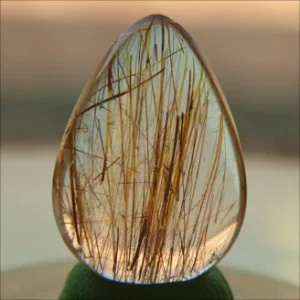What Do Bastille Day and Crystallography Have in Common?
by MichaelG
July 14, celebrated every year in France as Bastille Day, commemorates the storming and seizure of the notorious medieval armory, fortress, and political prison known as the Bastille. It was a major event during the French Revolution, and it’s celebration in Paris includes one of the oldest and largest military parades in Europe. The actual storming of the Bastille has an unlikely connection to crystallography.
Why the Bastille was stormed is rather complicated, but the immediate cause was dismissal from the French Royal Government of one Jacques Necker, a Swiss born Genevan banker who to serve as finance minister for French King Louis XVI, the French monarch who was to famously lose his head by guillotine, along with his wife Marie Antoinette. Necker became a very popular figure among the people of France, not least of for his public release of state budget, the first time this had happened in France. At the time, France was staggering unders a complex series of misfortunes, poor policy, and bad financial decisions. Having lost a series of wars against the United Kingdom during the preceding century, in revenge France chose to back the American Revolution, both financially and with direct military aid and forces but the cost of this victory was crushing. Overpopulation, drought, and incompetant advisors brought the state’s finances to the brink. Necker, a rising star well known for financial competance was brought in to stabilize the situation. His relationship to the monarch and his other ministers was turbulent and Necker moved in and out of government positions repeatedly, finally as finance minister. Despite his best efforts, he was unable to salvage the situation. His firing in 1798 triggered crowds to storm the Bastille releasing the few prisoners being held there.
Necker navigated the turbulence of the subsequent Revolution and the Napoleonic era in his native Switzerland. His nephew, also named Jacques married a Albertine Necker de Saussure. a prominent biologist and the two cared for his uncle in his later years. The couple had a son named Louis Albert Necker de Saussure. Louis studied Geology in Geneva, and later Chemistry at Edinburgh University in Scotland. He studied the geology of Scotland and produced the first geological map of Scotland. Ill health compelled Necker to give up mineral collecting. He settled permanently in Scotland become something of a recluse on the Island of Skye.
Necker’s collection of fossils and minerals was donated to the Musée Académique between 1842 and 1845, following his mother’s death and his retreat to Skye. The collection is housed in two departments, the fossils in the Department of Geology and Paleontology and the minerals in the Department of Mineralogy and Petrography. His 650 fossils are kept as a separate collection. Nearly all are from around Geneva and probably collected by Necker or his students. About 400 mineral samples are identifiable as Necker’s in the MHNG mineralogy collection database.
Necker is best know for the Necker Cube, an optical illusion showing a 2D view of a 3D wire wire framed cube. Necker observed that the ambiguous cubic shape could spontaneously switch perspective, writing “The object I have now to call your attention to, is an observation… which has often occurred to me while examining figures and engraved plates of crystalline forms: I mean a sudden and involuntary change in apparent position of a crystal or solid represented in an engraved figure”.

Necker cube on the left, impossible cube on the right.
By Gauravjuvekar – Own work, CC0, https://commons.wikimedia.org/w/index.php?curid=17057834
You may also interested in:

Spiritual and Healing Crystals of Greater Cincinnati: Their Metaphysical Powers and Native American Legacy
The minerals and crystals of the Cincinnati region are not only geological wonders—they are revered for their spiritual, healing, and metaphysical properties, deeply connected to regional traditions, Native American practices,
Crystals and Minerals for Healing: A Guide to Sacred Stones Across Spiritual Traditions
The use of crystals and minerals for healing, spiritual growth, and energy work spans countless cultures and millennia. From the ancient wisdom of Native American traditions to the chakra systems
Guide To Collecting Moldavite
Introduction: Understanding Nature’s Extraterrestrial Gift If you’ve ever held a piece of moldavite in your hand, you’ll likely remember the first impression—an almost electric charge and a sense of something
An Introduction to Quartz
Quartz: The Diverse Mineral and Its Multifaceted Significance Quartz, the second most abundant mineral in Earth’s continental crust, stands as a cornerstone in human history and development. Composed of silicon
Taylor Swift Cincinnati Concert Weekend Sale
Photo By Cosmopolitan UK, CC BY 3.0, https://commons.wikimedia.org/w/index.php?curid=84773232 This weekend international pop star Taylor Swift is playing two concert dates in Cincinnati. As with anyplace Taylor plays, this is a
Fluorite
Fluorite - the most colorful mineral in the world! And it fluoresces under UV light, too!
What Exactly do I have - Dolomite, Limestone or Dolostone?
The other night, I was discussing Eddie Murphy with a friend. Murphy, whose career has been up and down over the past 10 years had a bit of a comeback
What Kind Of Minerals and Crystals Can Be Found In Ohio?
Calcite and celestite crystals from Ohio If you live in Ohio and want to get rich finding Emeralds then forget it. Your best bet for that is to move to
What is the Connection Between Herkimer and Diamonds?
Herkimer County, lying north of the Mohawk river in upstate New York, is known for two things: being the one of two production sites for the Remington Arms Company, and